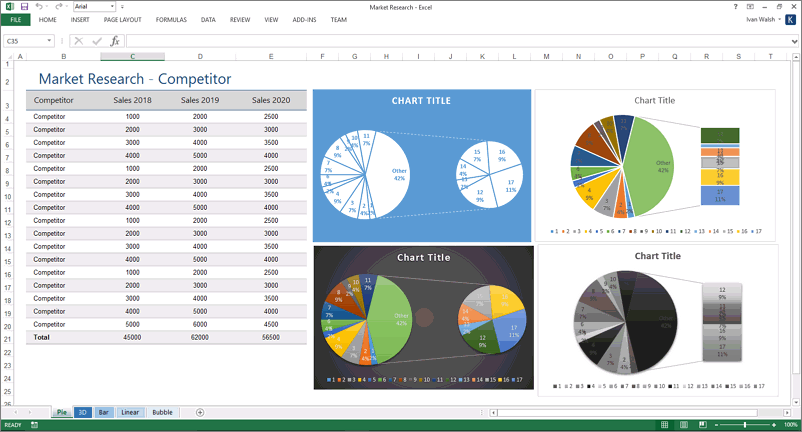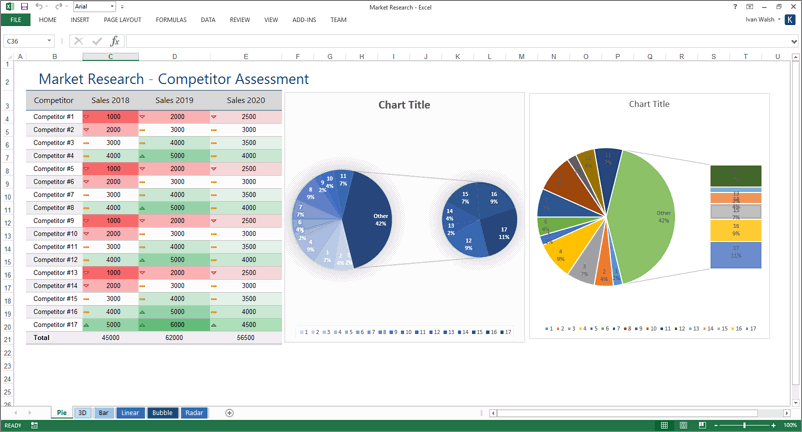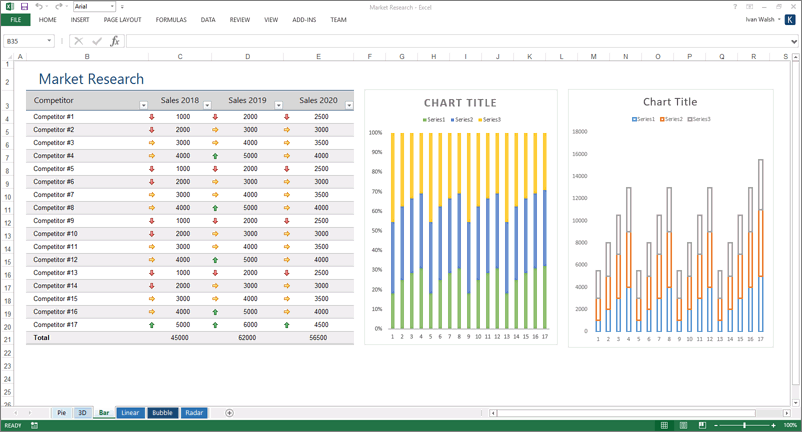Market Research Plan
Market Research – What Do Customers Secretly Think of Your Brand?
This is Part One of a ten part series on creating a Market Research Plan. The sections will roughly be the following:
- Define What and Who You Want To Research. Who is your real target audience?
- Define the Problem Statement
- Develop a Market Research Proposal
- Design the Research Study
- Develop Your Market Research Proposal
- Test the Market Research Design
- Collect Data
- Analyze and Interpret the Data
- Report the Results
- Next Steps
* If I’ve missed something or you want me to add another section, drop me a line.
How to Develop Brand Loyalty and Increase Long-term Sales
What’s better than a customer buying your product once?
Market Research – Competitor Analysis Worksheet
The holy grail for most companies is to persuade them to buy again, and then again, and then again, and…
Instead of finding new customers, sell more products to your current customers.
Most marketing experts believe that the fastest way to generate more sales is to:
- Identify your best customers
- Understand their preferences
- Examine their buying habits
- Define their emotional triggers
- Revise your marketing plan to convert softcore buyers into hardcore fans
Repeat business is always more cost effective than finding new customers with all their associated costs and overheads.
Brand Loyalty Influence on Customer Spending
So, how do you persuade customers to buy more than they already have? Or more than they need?
First, let’s define what is brand loyalty:
‘Brand loyalty is a customers commitment to repurchase or continue using a product.’
An example?
You can see this when customers make repeat purchases and also when in other ways, such as promoting the product through word of mouth.
Brand loyalty is more than repurchasing.
Customers may repurchase a product for other reasons:
- Situational constraints (also known as vendor lock-in)
- Lack of viable alternatives
- Convenience
In marketing terms, this is known as “spurious loyalty”. Once the constraints are lifted, other alternatives arise or things become more convenience, then the customer will move elsewhere.
You can see this when cable or telco companies keep customers locked into horrible deals. It’s only when a rival enters the market do they finally change their rates and offer better value.
Brand Loyalty? Give Me an Example
A good example is Apple.
Its intense fan-base evangelize most every product release, making repeat purchases and endorsing the product to their friends, families and other social channels.
True brand loyalty exists when customers have a genuine positive attitude towards the product which is then seen through repeat buys.
This type of loyalty is a great asset to the firm:
- Customers may pay higher prices (see the high cost of the iPad)
- Cost less to serve (Apple fanboys often have deep technical knowledge of the product)
- Bring in new customers (by showing off the new features to friends and bigging up the brand)
Four Types of Brand Loyalty
In marketing terms there are four patterns of behavior:
- Hardcore Loyals – who always buy the brand and usually detest the competition. See Apple v Microsoft.
- Softcore Loyals – loyal to two or three brands.
- Shifting Loyalty – move from one brand to another.
- Switchers – with no loyalty (possibly ‘deal-prone’, constantly looking for bargains).
How to Name Your Brand
There are several ways to do this. Here are some guidelines regarding the ideal traits of a good brand name.
Make sure the name:
- Attracts attention.
- Easy to pronounce.
- Easy to remember.
- Easy to recognize.
- Easy to translate.
- Protected under Trademark law.
- Suggests product benefits.
- Highlights your product’s position relative to the competition.
- Stands out among a group of other brands.
How to Develop Brand Loyalty
Before you can start any of the above, you need to find out what customers (and maybe prospective) think of your current brand.
Once you have this information, you can develop different marketing tactics to increase brand awareness and address some of the issues and concerns highlighted in the market research studies.
To understand what your customers think of your brand, use a Brand Loyalty template to survey your customers.
Use this template to develop your own survey based on the type of product or service your company offers. You can use it to gauge the loyalty consumers have to a specific brand. For example, if you’re selling personal computers, then ask them:
- What type of computers they use?
- How many computers they have at home and in the office?
- What brands do they prefer?
- What is the killer feature for each brand?
- How important is cost? For example, on a scale of 1-5.
- When do they plan to make their next purchase.
In the survey template, ask your customers a combination of open and closed questions.
Open questions allow the person to discuss things with less constraints than Yes/No type questions.
‘How would you describe the product to your friends?’
This lets the person discuss what they think and feel about the product. These type of questions often uncover things you had not thought of when marketing your products.
Closed questions are useful when you want to gather so-called hard data. For instance, how many PCs do you have? Do you prefer Netbooks or Desktops? Where did you see our product first?
Market Research Excel Templates
Creating Brand Loyalty Surveys
The key to successful surveys is to work backwards and ask yourself:
- What do I want to really know about my brand?
- What do I want to know about my competitors?
- What gaps exist in what we know about our customers?
Once you have clarified what you need to capture, modify your Brand Loyalty survey to reflect this.
The goal is that once you have prioritized what you need to capture, structure the survey accordingly. Adjust your survey so that the information is easy to share with your Marketing colleagues.
Finally, remember to balance the survey with Open and Closed questions.
While it’s important to gather the hard data, especially if you’re following up on a previous marketing campaign, use the Open questions as an opportunity to let the customer speak for themselves.
Next Steps
Once you have completed the survey, gather the data and start examining it.
- Remove any anomalies that may have crept in.
- Look out for instances when the interviewer may have influenced the subjects, for example, by placing ‘words in their mouth’.
- Share this data with the Marketing Team.
- See what new data has arisen that needs to be fed into the Marketing Plan.
- Depending on the feedback, adjust your Marketing Plan or parts of it that need to be updated, for example, Ad campaigns.
Over to you.
What do you think is the best way to gather information about your brand? Do you find surveys work best or would you recommend phone calls, interviews, or focus groups?
Please add your thoughts below.
About the Author: Ivan Walsh shares Business Planning Strategies on IvanWalsh.com.



